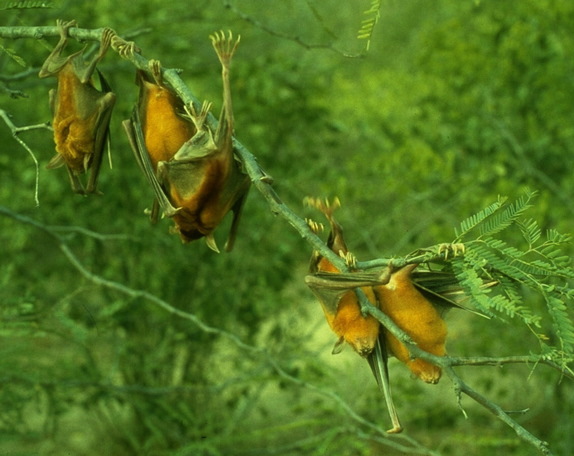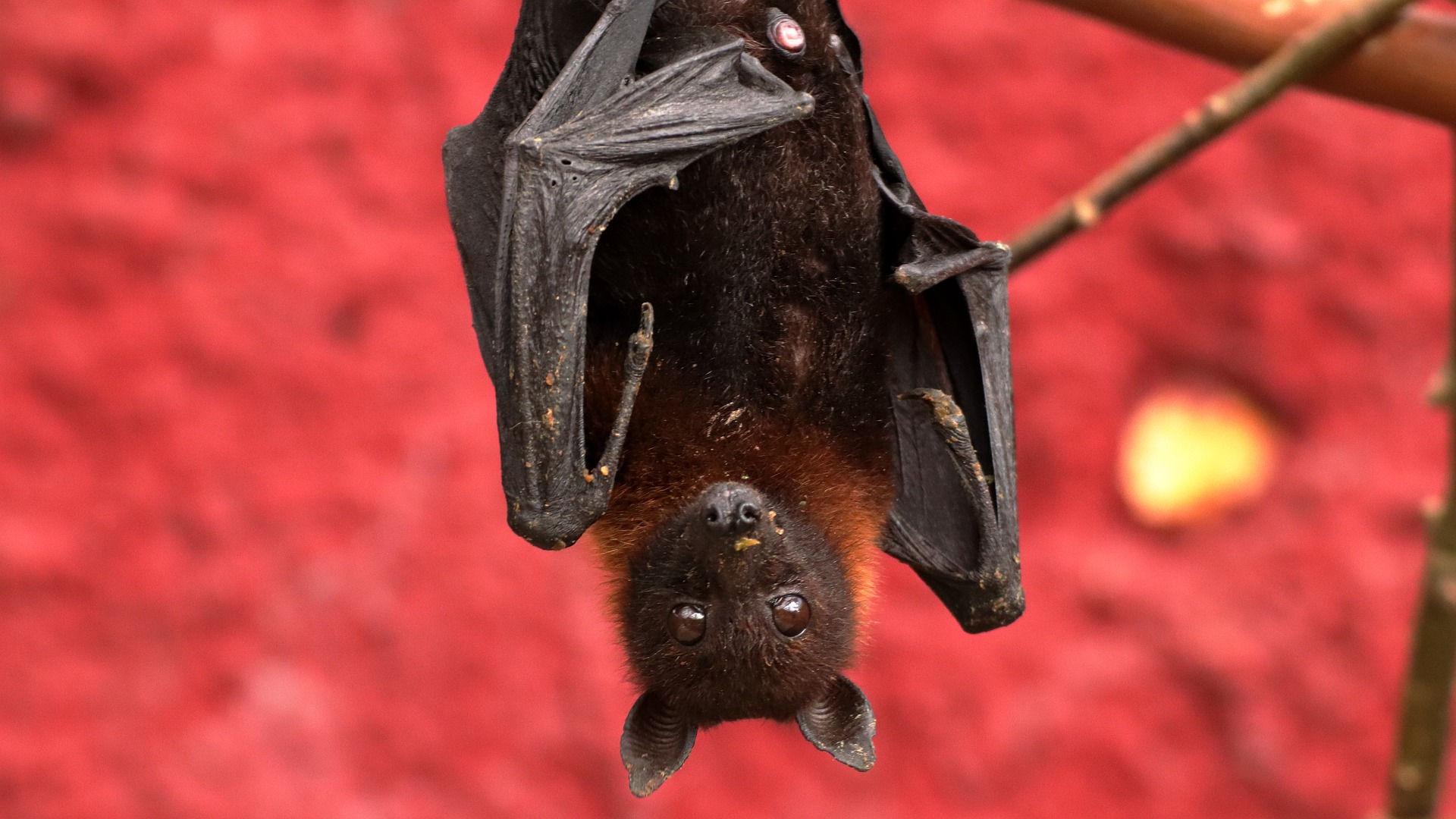Reading Time – 6 Minutes, Difficulty Level – 2/5
Did you know that most bats aren’t blind? Sure, during the day, they might not see as clearly as humans do, but that’s because their eyes are built for the night. Bats are nocturnal creatures — meaning they sleep during the day and hunt during the night — so their eyes are able to see in what we might consider pitch blackness. Even still, they have a special ability that lets them see using sound. Echolocation.
Bats use echolocation by emitting high pitched “chirps”, which bounce off of nearby objects and return to the bat. The nature of the returning sound can tell the bat how far an object is, what direction it is moving, and even its size and shape.
The Nature of Sound
Sound is a pressure wave. When something vibrates, like the strings of a guitar, it causes the air around it to vibrate as well, creating regions of compressed and rarefied (low pressure) air. These vibrations propagate outward at the speed of sound (which in air is 343 meters per second). Slow vibrations make a low pitched sound and fast vibrations make a high pitched sound. The frequency of a bat’s chirps ranges from 9 kHz to 200 kHz, which is high enough to distinguish it from most other sounds in the environment. For reference, the highest pitch a human can hear is 20 kHz.
How Bats Interpret Echoes
The sound that returns to the bat can give a lot of information. Since sound has a speed, the delay between when the bat sends its signal and when it hears the echo will indicate how far away an object is. Just like humans, bats can also perceive the direction of a sound depending on which ear hears the signal first. There is also a change in volume because sounds get quieter the further they travel.
Doppler shift is a physical phenomenon that can indicate to a bat if the object is moving towards or away from it. You may have noticed that when an emergency vehicle is driving past you, the siren seems higher pitched when it is approaching and lower pitched after it has passed. Recall that a sound wave is made of high pressure and low pressure regions of air. When an object moves towards you, it pushes those high pressure regions closer together, which is the equivalent of a higher frequency wave. The opposite happens as it moves away.
Finally, bats have a remarkable ability to determine size and texture using echolocation. Large objects are able to reflect more sound and create a louder echo, whereas small objects create quieter echoes. A smooth object reflects sound evenly, creating a clear echo that sounds similar to the original sound. Think of the smooth walls of a cave. When you shout, you can hear your voice return mostly unchanged. On the other hand, a roughly textured surface, like the bark of a tree, scatters sound unevenly. A bat will receive a signal with variations in pitch, timing, and even frequency. This is important for bats to distinguish between the rough bark of a tree branch and the smooth shell of an insect.
Exceptional Echolocation Examples
The greater bulldog bat (Noctilio leporinus), also known as the Fisherman bat, is the loudest species of bat ever recorded, with a chirp that can reach 140 decibels. If this noise were produced at a low enough frequency for humans to hear, it would be like standing next to a jackhammer or gunshot. They use this thunderous sound to detect fish in shallow waters, such as ponds, rivers, shorelines.

Photo by Phil Myers. License: Creative Commons Attribution-Noncommercial-Share Alike 3.0 Unported License.
To avoid being eaten, some moths have evolved to hear the chirps of bats. For this reason, the western barbastelle bat (Barbastella barbastellus) uses a very quiet signal, about 100 times quieter than other bats that hunt flying prey.

Credit: Hugo Willocx / Foto Natura / Minden Pictures
Hunting via echolocation can be difficult in a cluttered environment, but the neotropical common big-eared bat (Micronycteris microtis) has found a way. This bat can detect stationary insects in the foliage of dense rainforests using its unique chirps. The signal is very short, preventing it from overlapping with the echo, while also being produced rapidly, so the bat can receive as much information as possible. This signal also contains multiple pitches, which provides more information about texture, since short and long wavelengths of sound scatter differently.

Credit: (c) Jose G. Martinez-Fonseca – (CC BY-NC)
Not All Bats Echolocate
Some species of bat don’t echolocate at all. The largest bat in the world, the giant golden-crowned flying fox (Acerodon jubatus), has excellent eyesight to navigate with. Additionally, its diet consists of fruit, primarily figs, so it has no need to stealthy hunt. Most bats that do not echolocate are some form of fruit-eating bat for this reason.
Conclusion
In conclusion, many bats can navigate and hunt in complete darkness using echolocation. By emitting high-pitched chirps and interpreting the echoes, they can tell the distance of objects, speed and direction, size, shape, and texture. From the bulldog bat’s thunderous chirp or the big-eared bat’s subtle signals, each species of bat that can echolocate has evolved a unique signal to suit their environment and prey.

I’m a recent graduate with a B.Sc. in Chemical Physics from the University of Waterloo. I love breaking down how and why things work right down to the atoms! Some of my subjects of interest are quantum mechanics, nanotechnology, and materials science.








